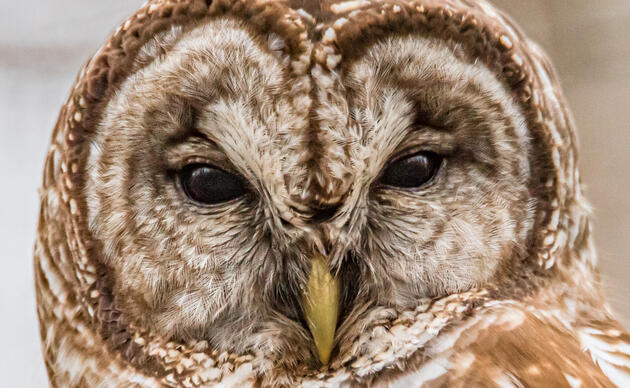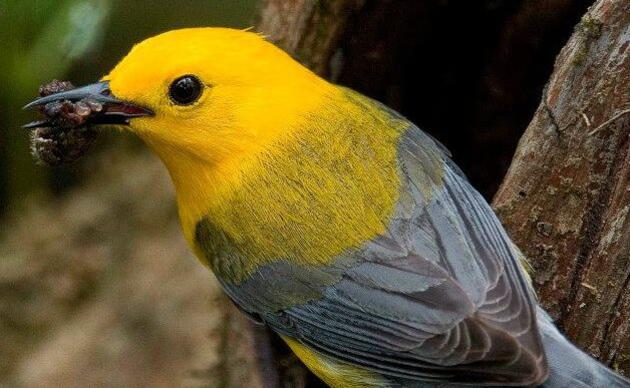Accessability at Beidler Forest
At the Audubon Center at Francis Beidler Forest, one of our most important priorities is ensuring our facilities are accessible to everyone. Please read below about what to expect when visiting our site or joining one of our programs. If you require any further accommodations, please reach out to us directly. We want to ensure that all people from all backgrounds have the opportunity to explore and enjoy Beidler Forest.
Visitor Center
Parking & Entrance: The visitor center is accessed via a one-mile-long gravel driveway. Our parking lot is a one-way loop, and it includes 50+ gravel parking spots for small vehicles and 6 parking spots for buses and RVs. We have two handicap parking spots located in from front of the center. A slightly elevated concrete path leads from these two spaces to a ramp that then leads up to the center’s entrance. There are two entrance doors into the center; at present, neither open automatically.
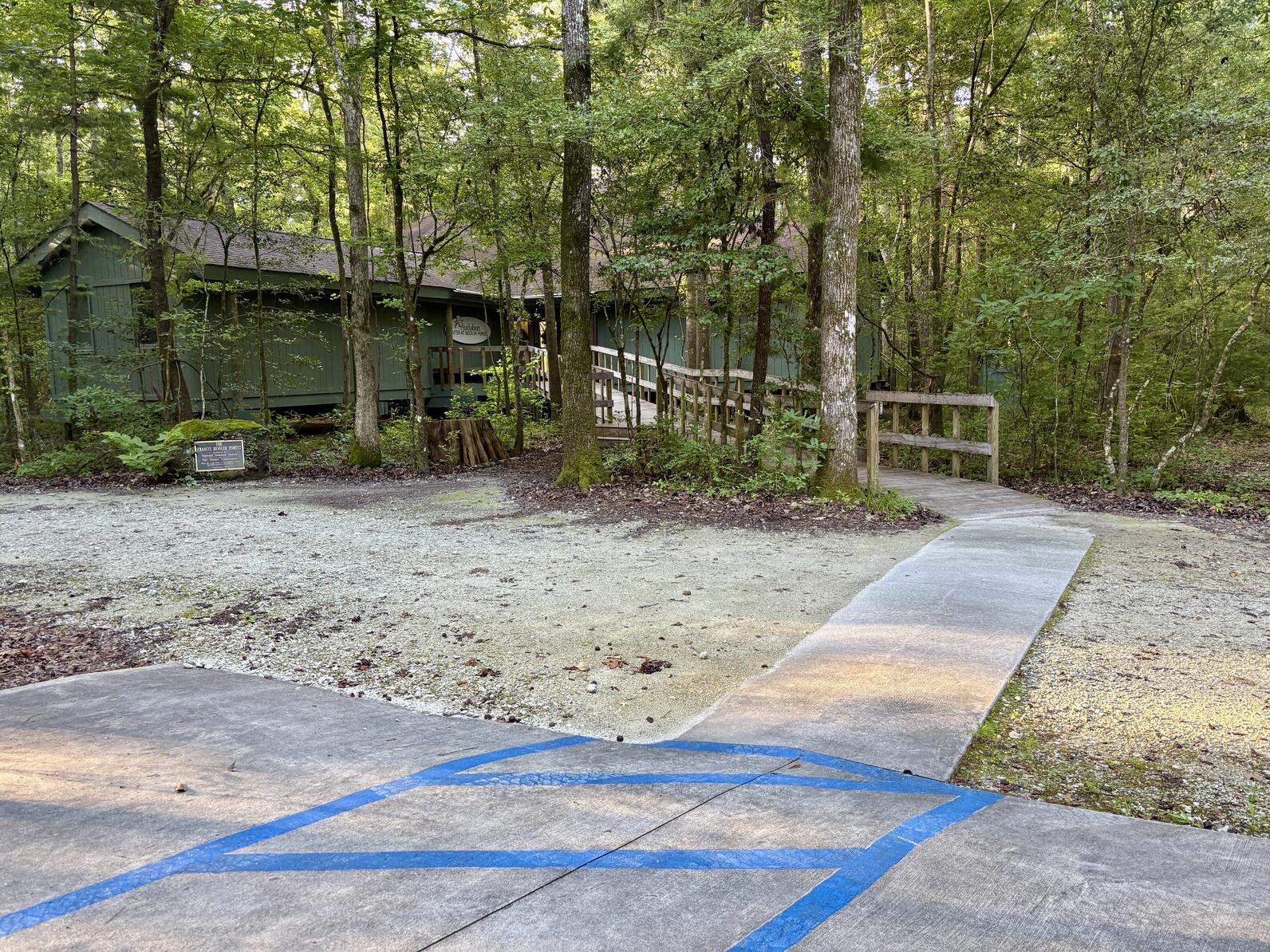

Picnic Tables: We have a number of picnic tables scattered throughout our parking lot. Most are accessed via dirt paths off of our gravel parking area and width of these trails varies greatly. The back porch of the visitor center has bench seating that is easier to access, but no tables.
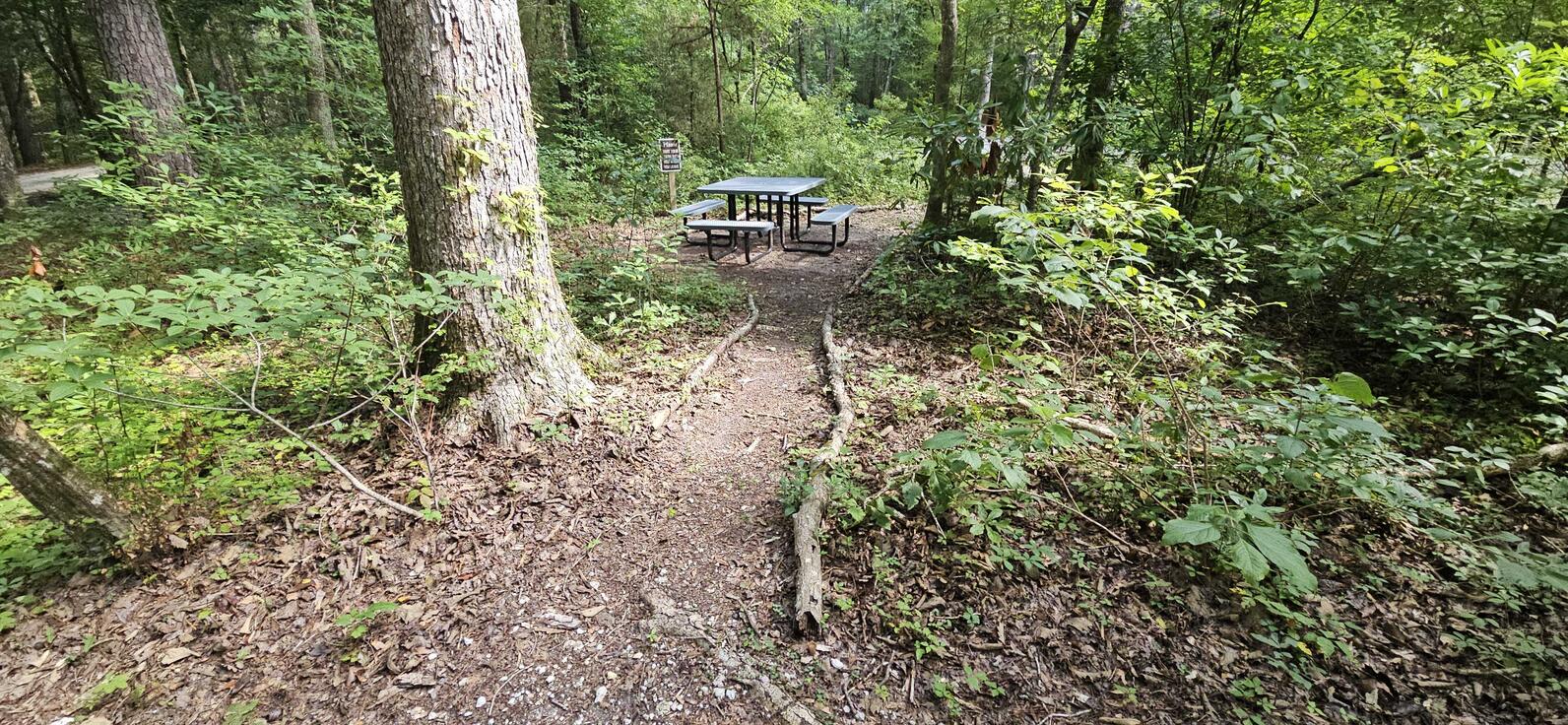
Restrooms: We have one ADA accessible stall in both of our bathrooms. There are no restrooms available out on the boardwalk or along our grassland/woodland trail.
Wheelchairs: Our parking lot is gravel with the exception of the concrete slab designated for handicap parking. There’s plenty of room in the center to move around as staff ensure to leave avenues open between furniture and gift shop displays when possible. There are a few transition areas on the ground that are approximately 1/2 tall. These are located at our front and back entrances, as well as one in the middle of the visitor center where tile transitions to vinyl flooring.
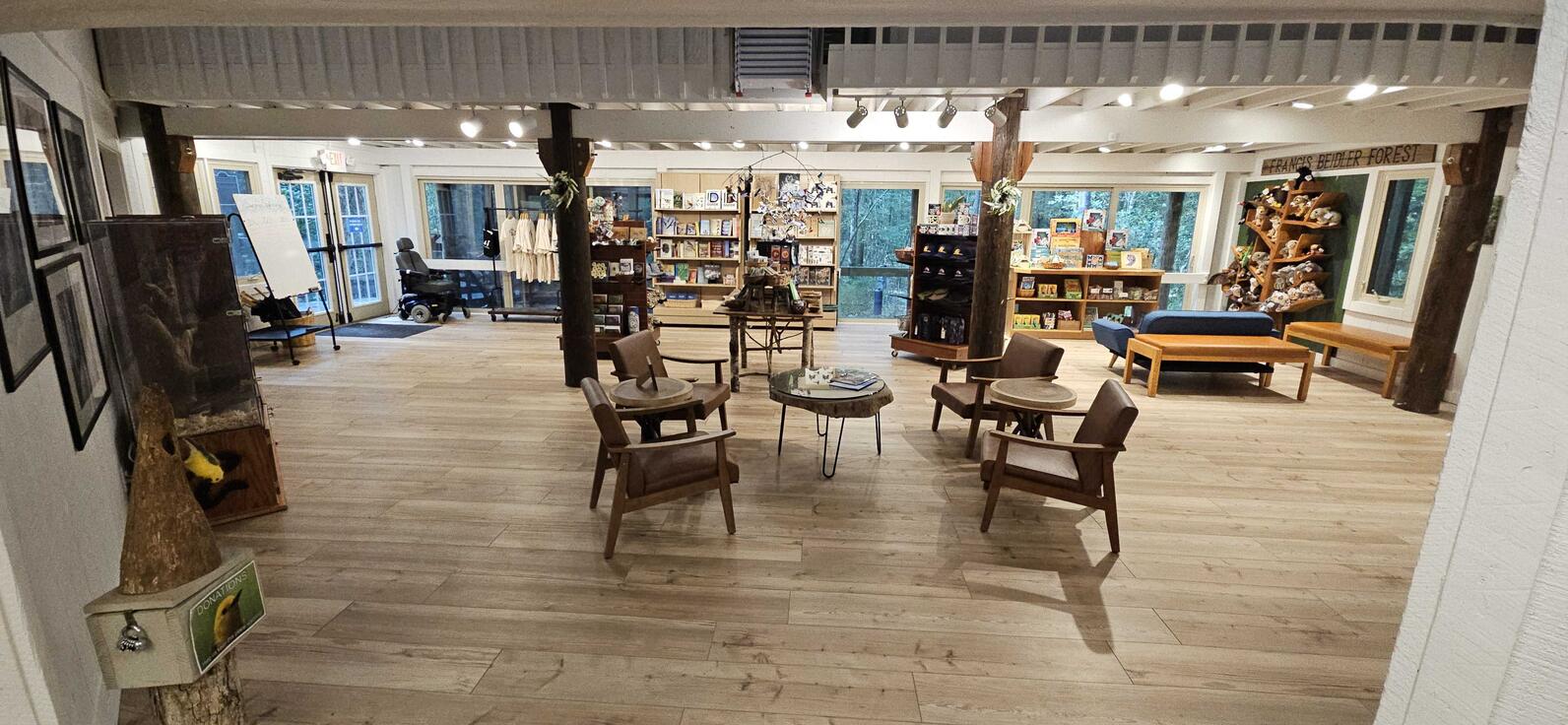
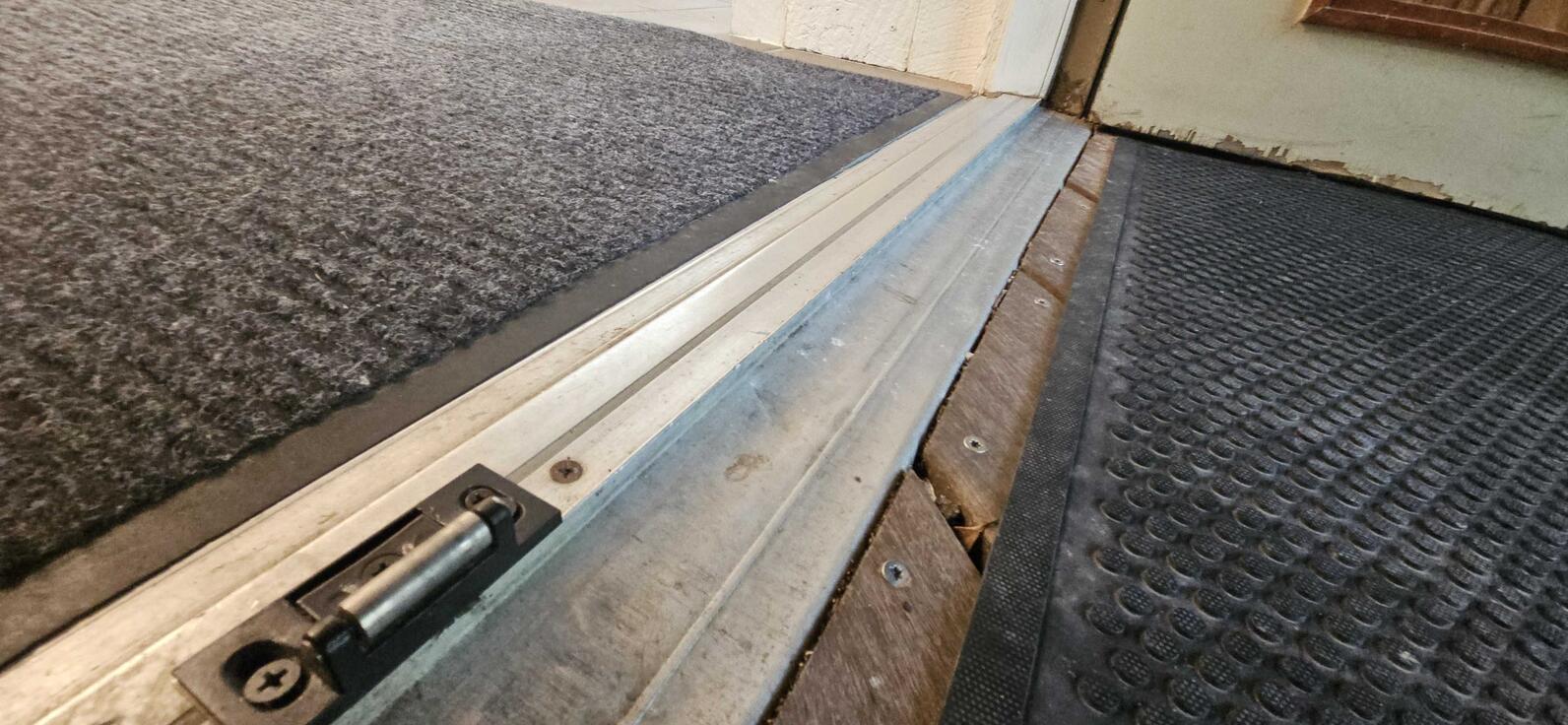
Equipment: We have an electric wheelchair, an electric scooter, and a push wheelchair. All you have to do is ask if they are available when you arrive, or call ahead of time and see if we can reserve one on the day you’d like to come. These three items are available on a first come, first serve basis.
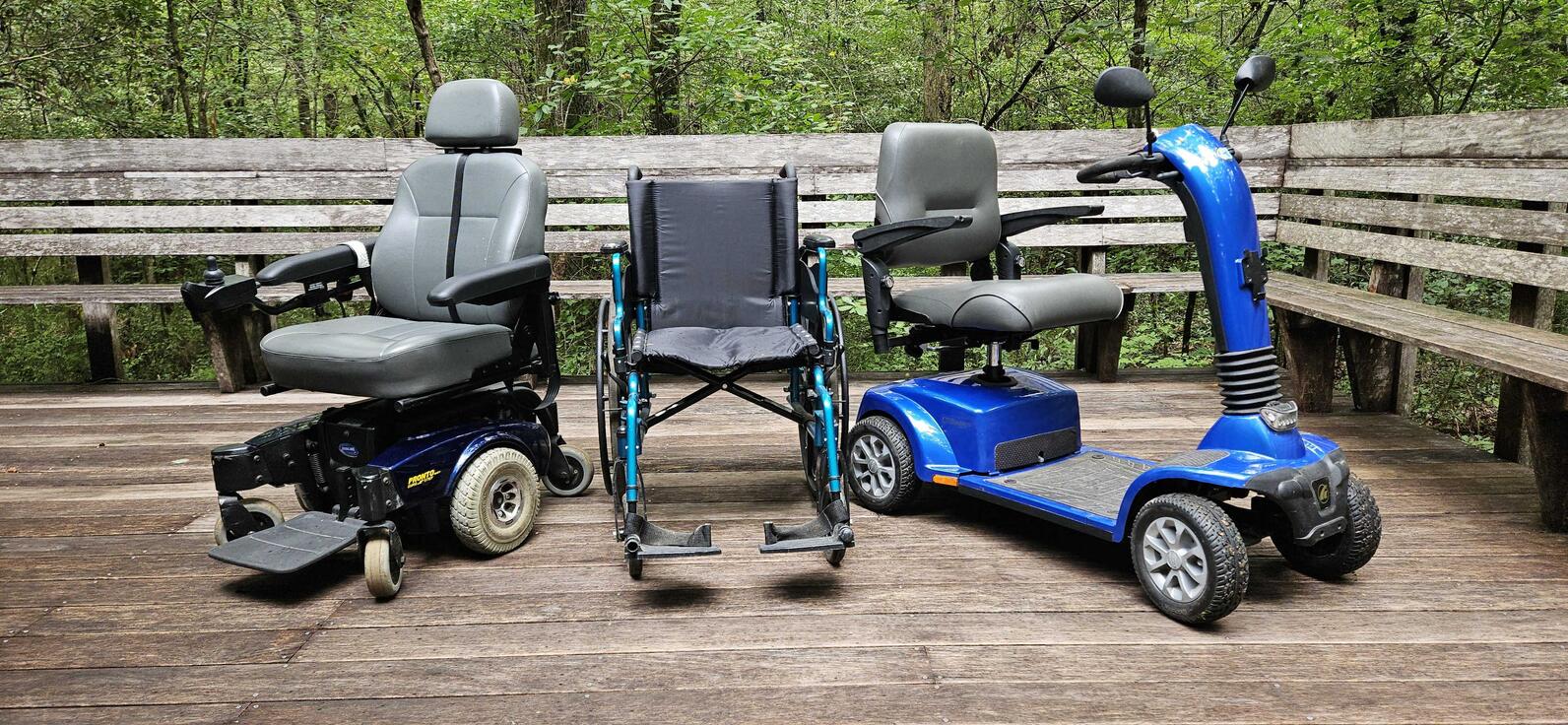
We also have binoculars that you can use, though we do ask to hold an ID at the front desk while you are using them on the boardwalk.
Boardwalk
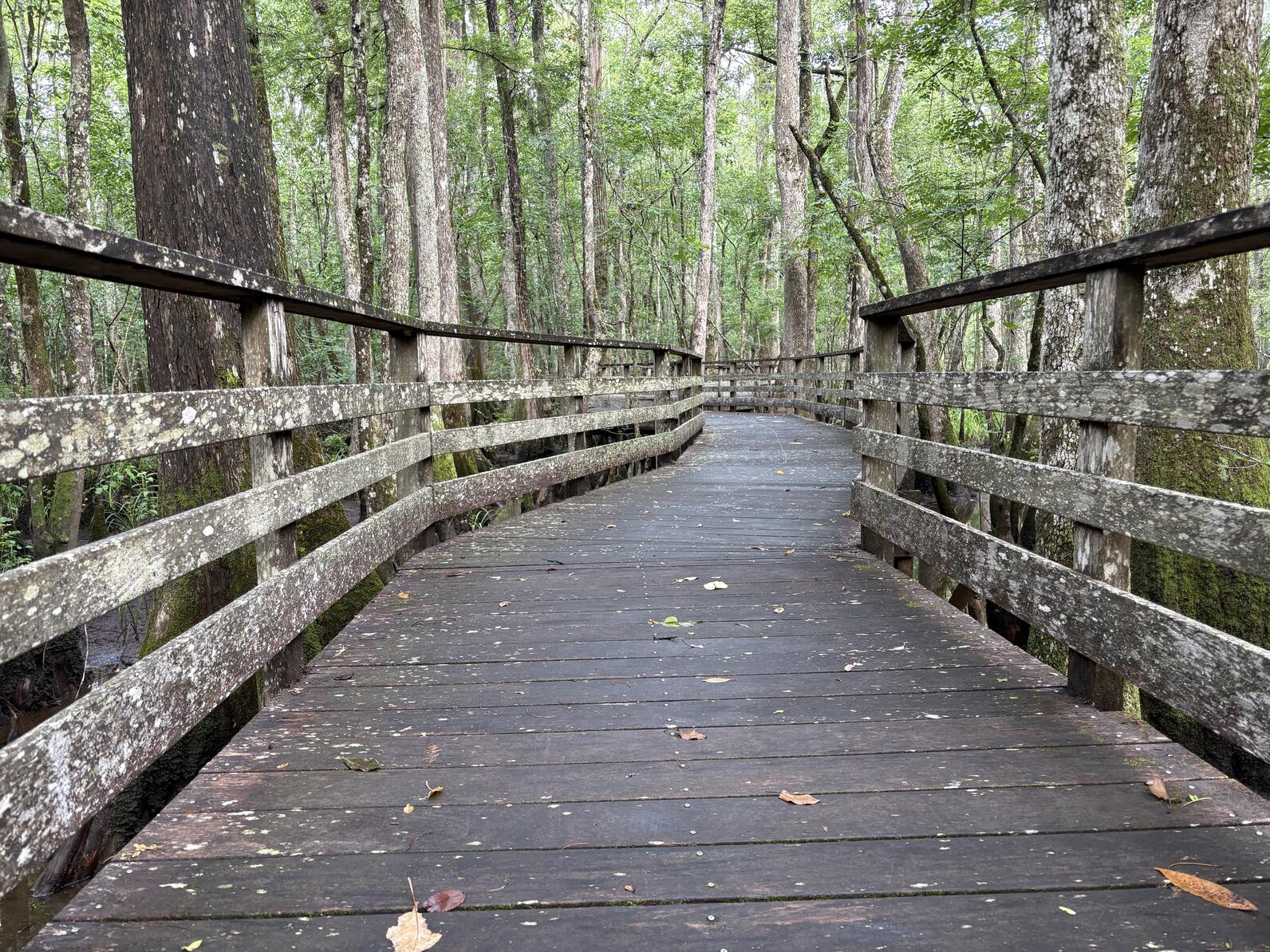
Our 1.75-mile boardwalk is ADA accessible. It's width is five feet wide or wider for the entire length. It is on average elevated a 1 to 6 feet above the ground and is mostly level, except for the front and back ramps.
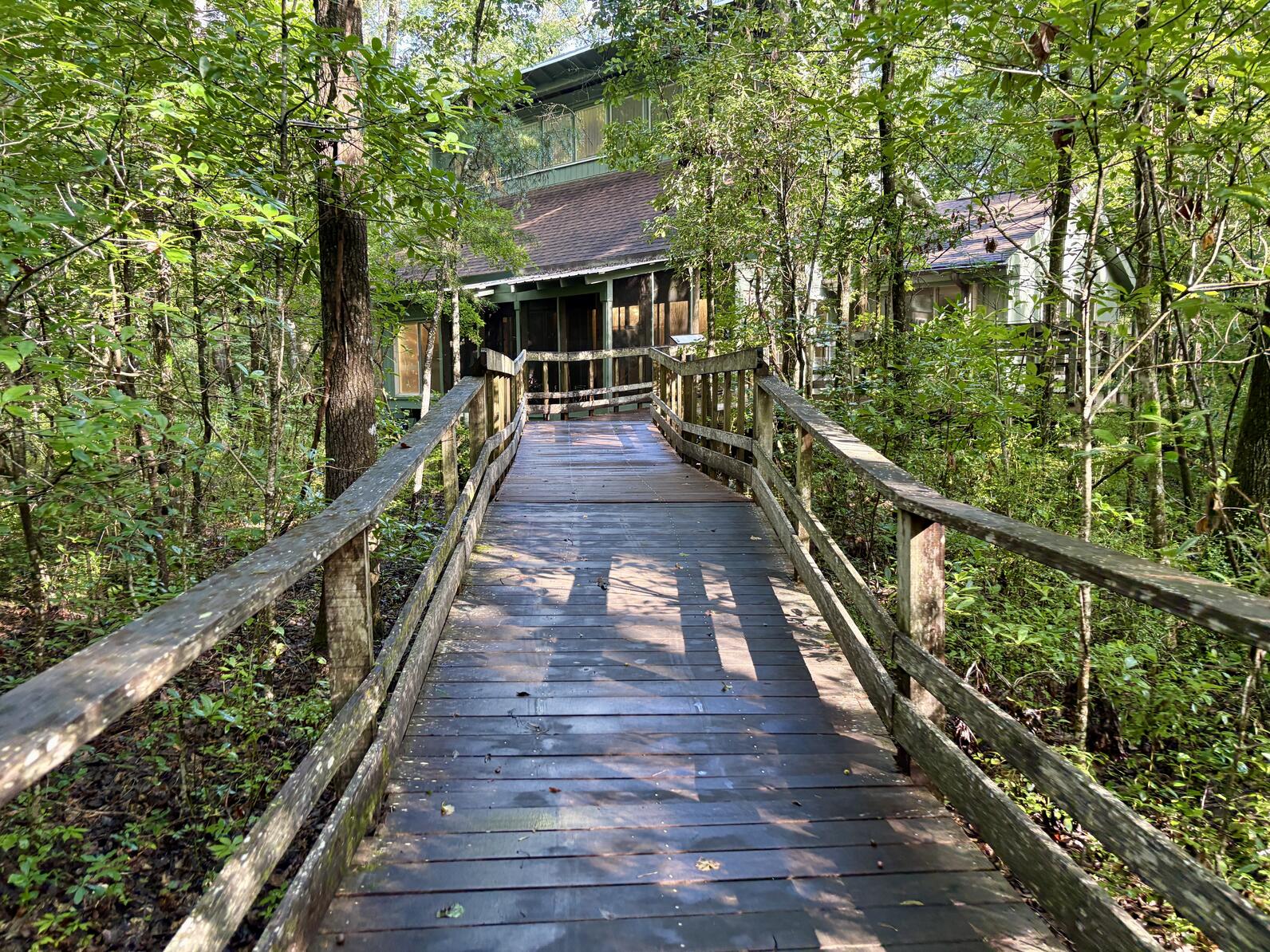
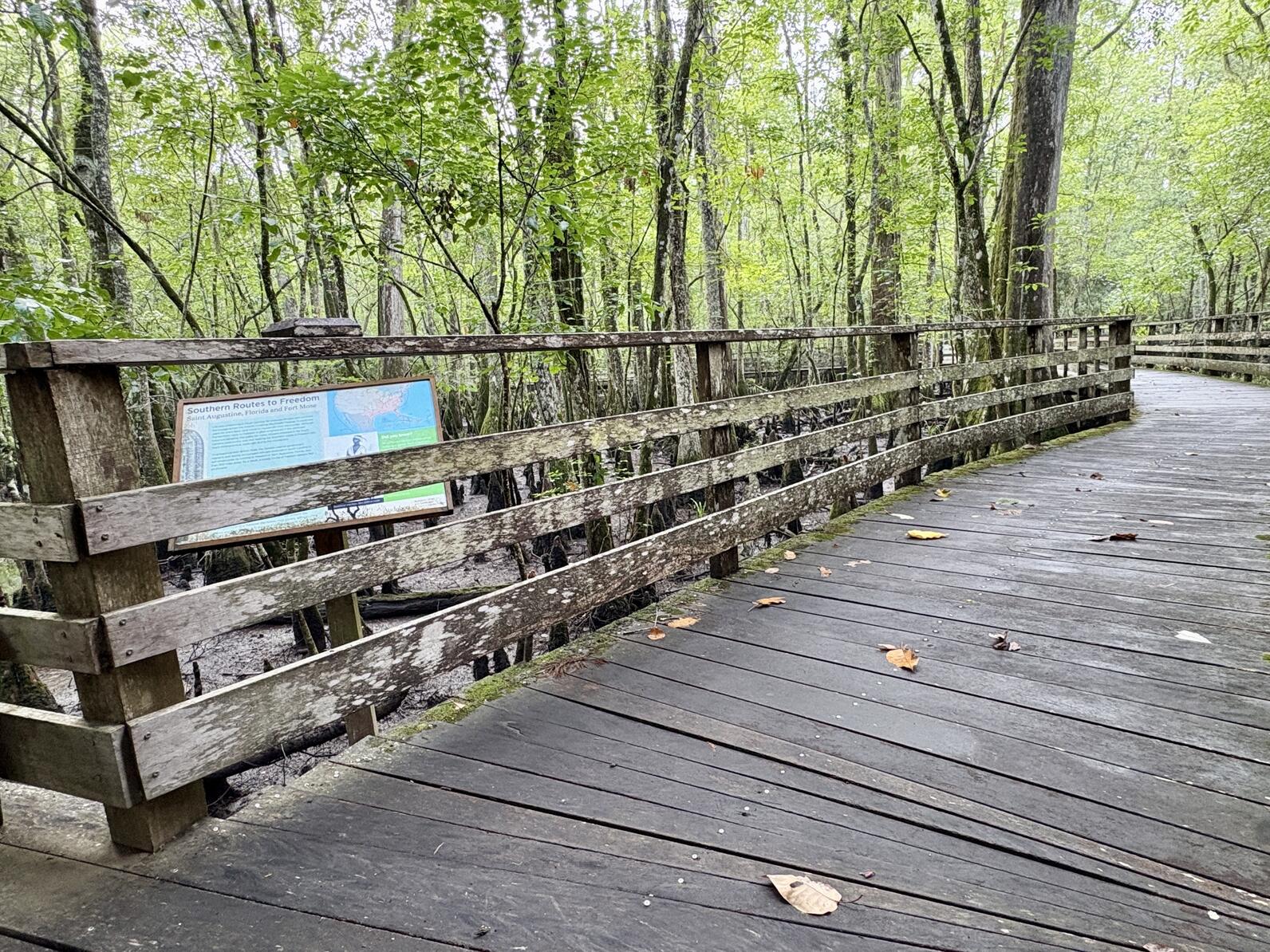
The handrail is 2.8 feet high from the deck. There are three mid-rails along most of the boardwalk, but we maintain an 8 inch gap between the last mid-rail and the handrail. Interpretive signage found along the boardwalk can be viewed from above or below the handrail.
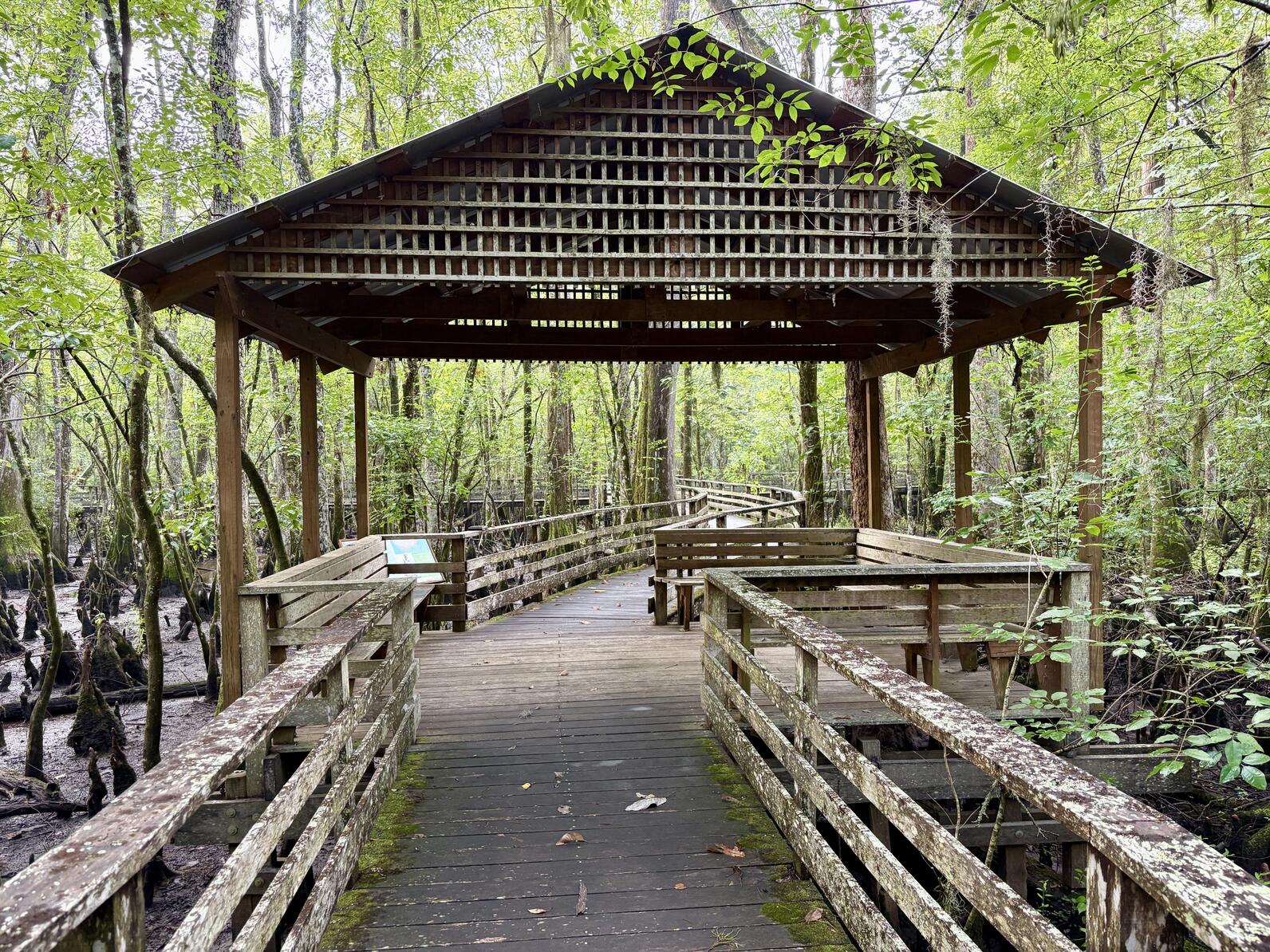
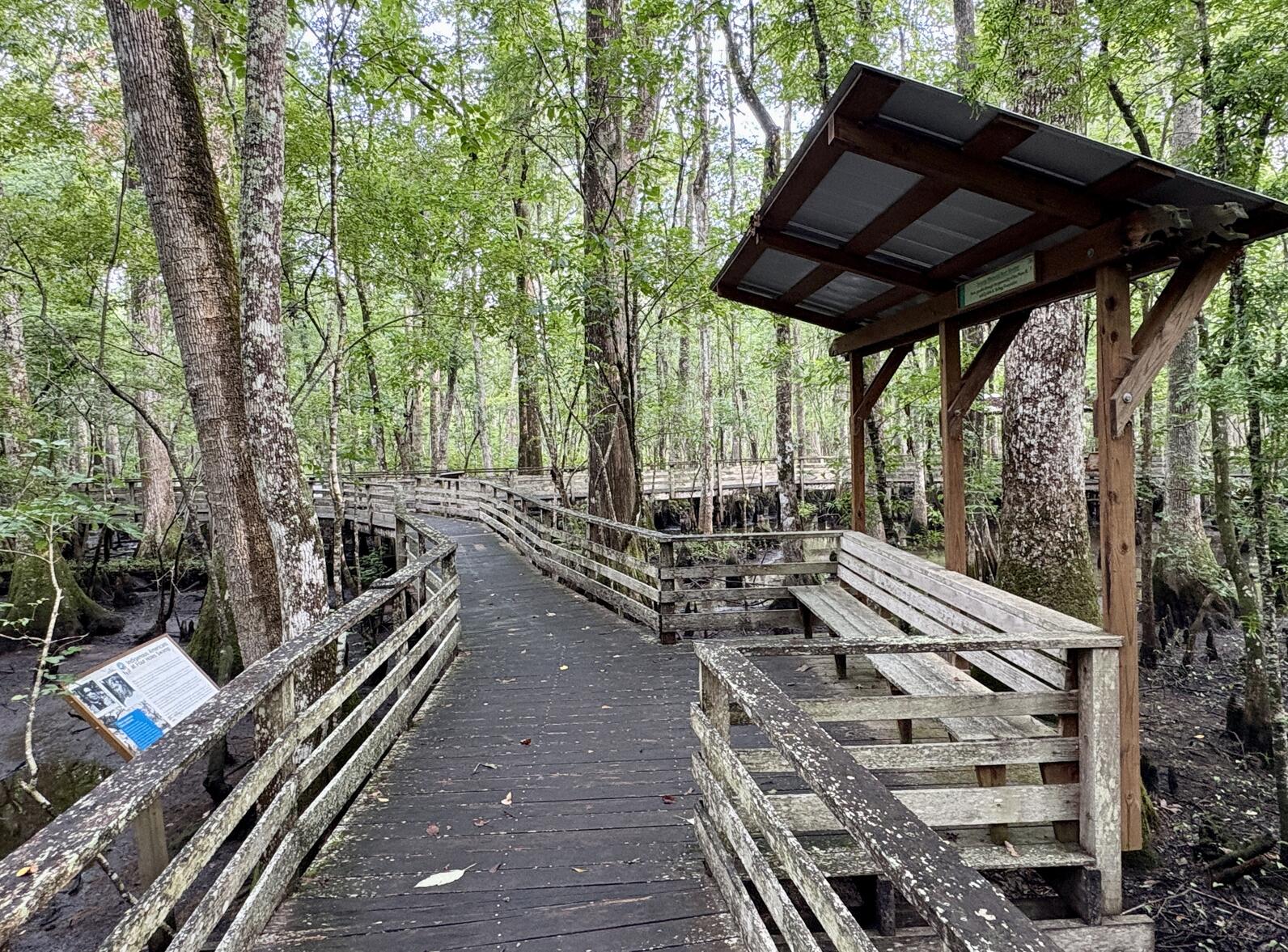
There are two large covered shelters and six additional smaller covered rest shelters with seating along the boardwalk. No rest shelter is more than 1000' (or 1/5 of a mile) from another.
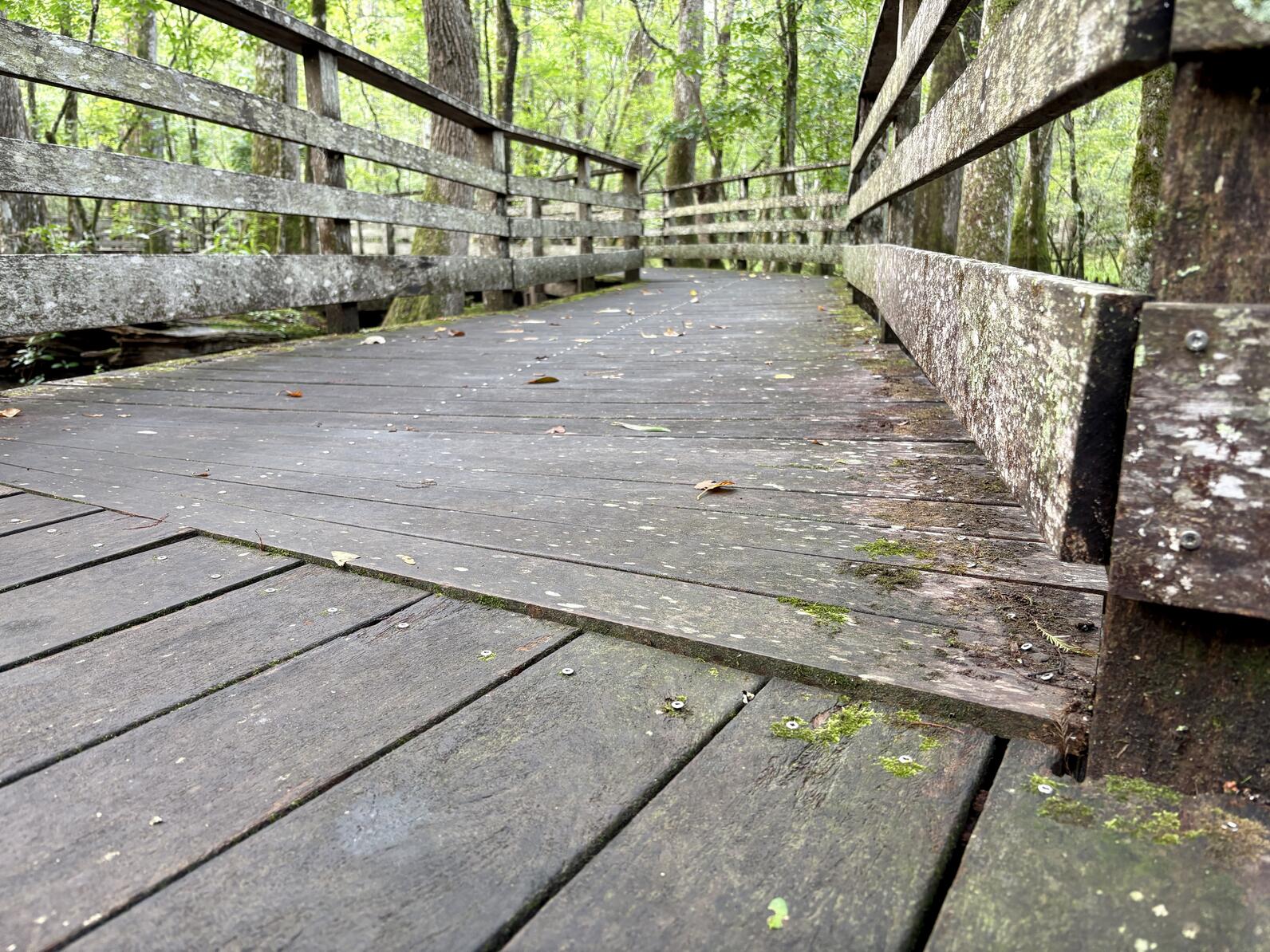
Staff regularly check the boardwalk and remove downed sticks, leaves, and other debris. While the decking is flat, there may be a few boards that are raised slightly higher than others, especially where the boardwalk turns.
Here is a map of our boardwalk.
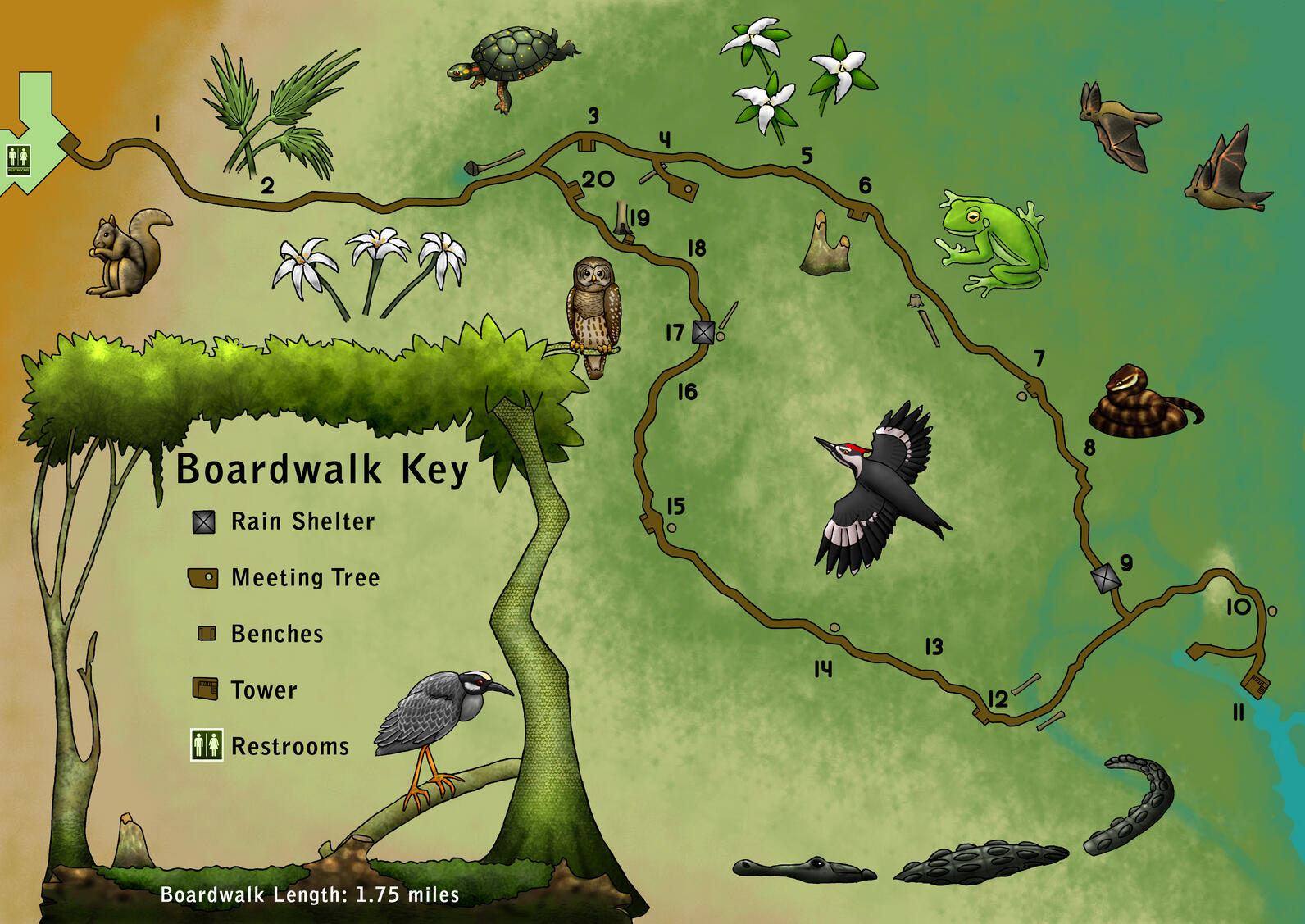
Grassland/Woodland Trail
This trail is not ADA accessible. It involves a combination of dirt paths that may be uneven depending on the season. It is occasionally disced for prescribed burns, which means that the path is basically shredded to reduce plant growth in order to create a barrier that fire cannot cross outside of the intended burn area. The other half of the trail consists of a winding path through the woods that is usually 2 to 3 feet wide with roots and other elements along it. There are also numerous bridges (which you don’t have to use to do most of the trail) that require a step up and down to cross.
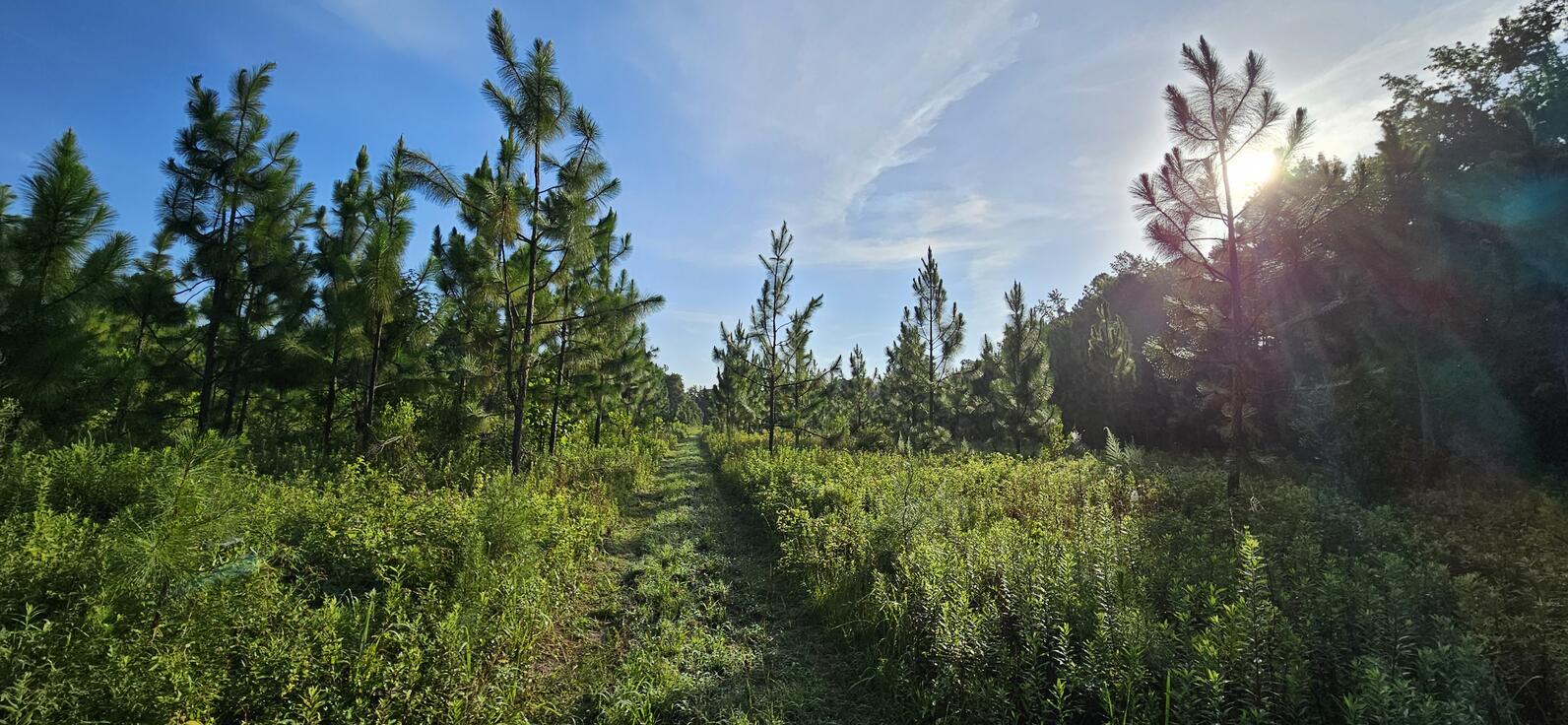
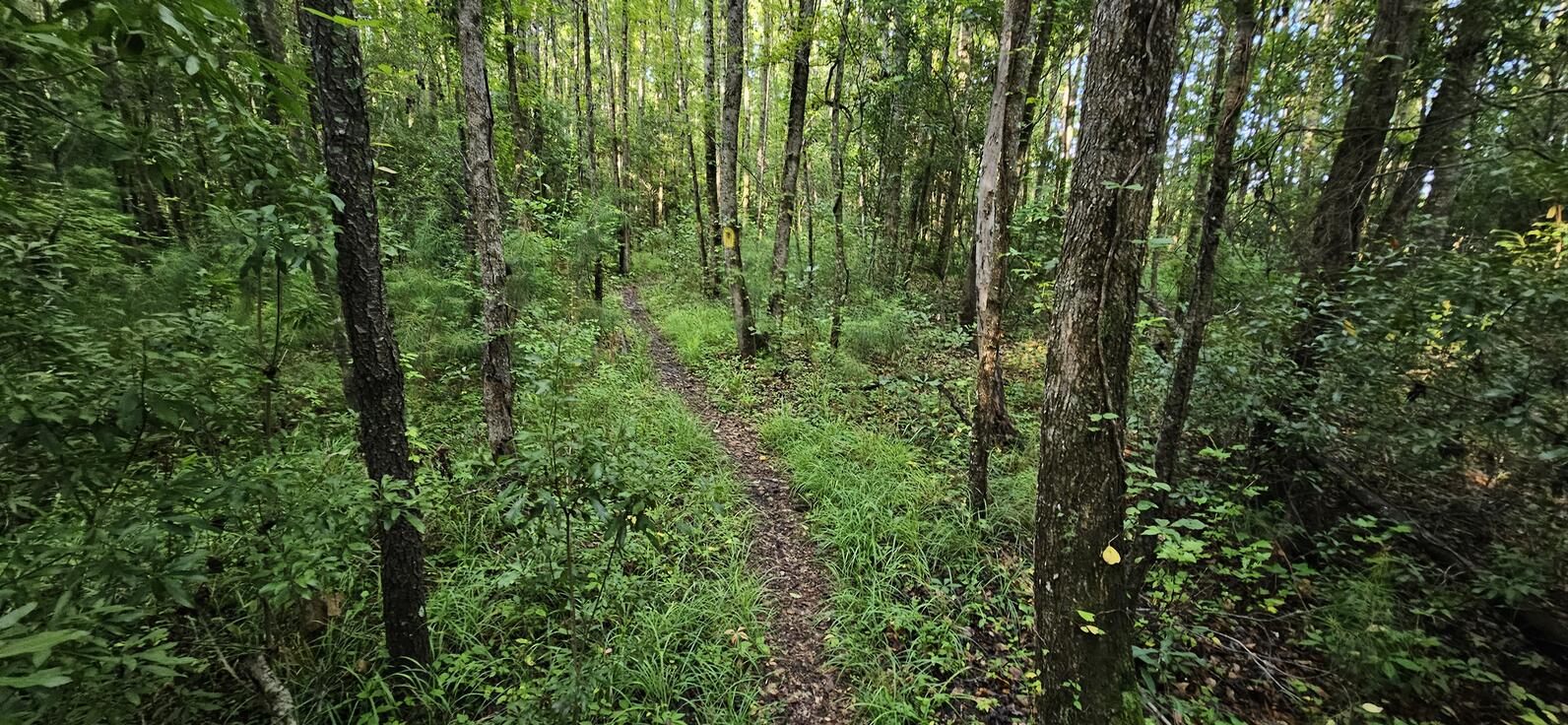
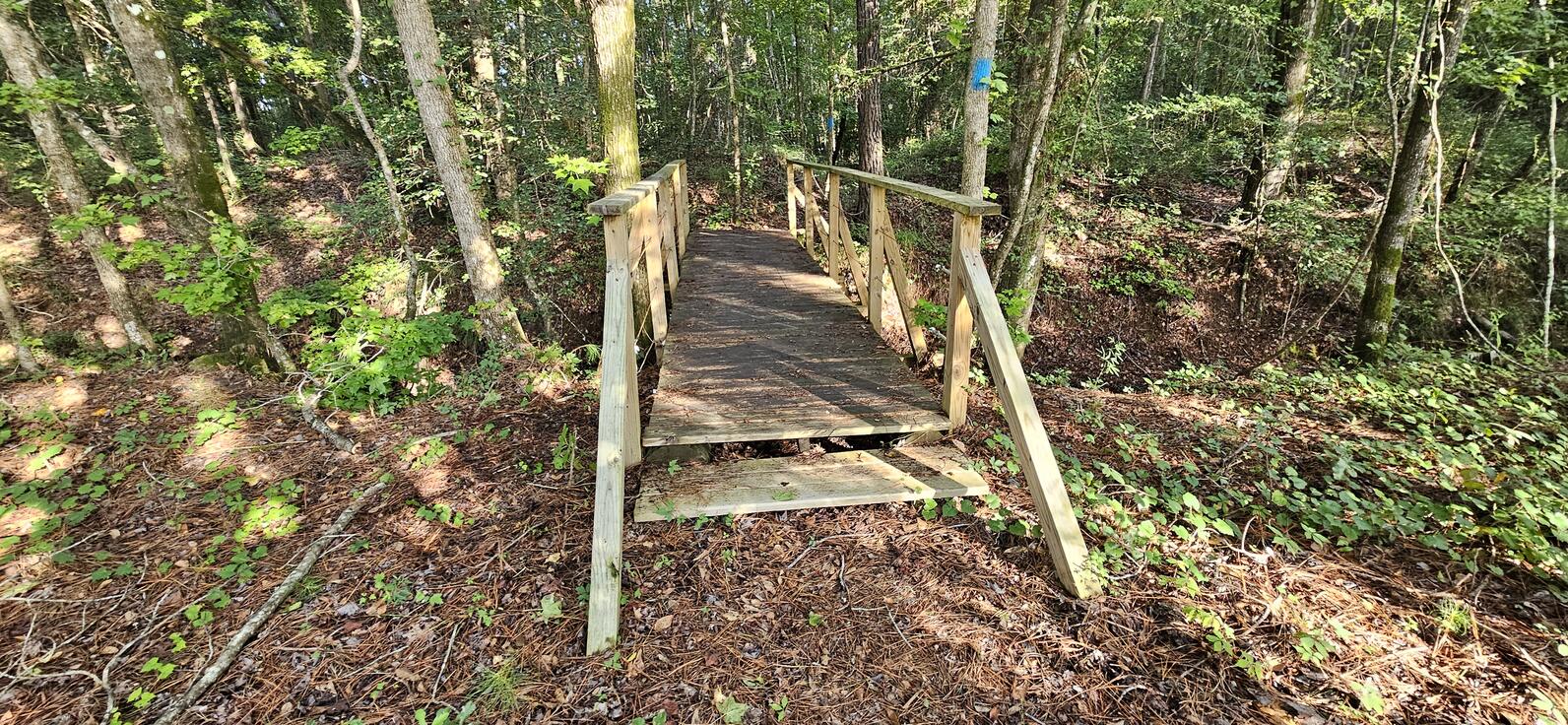
Here is a map of our grassland/woodland trail.
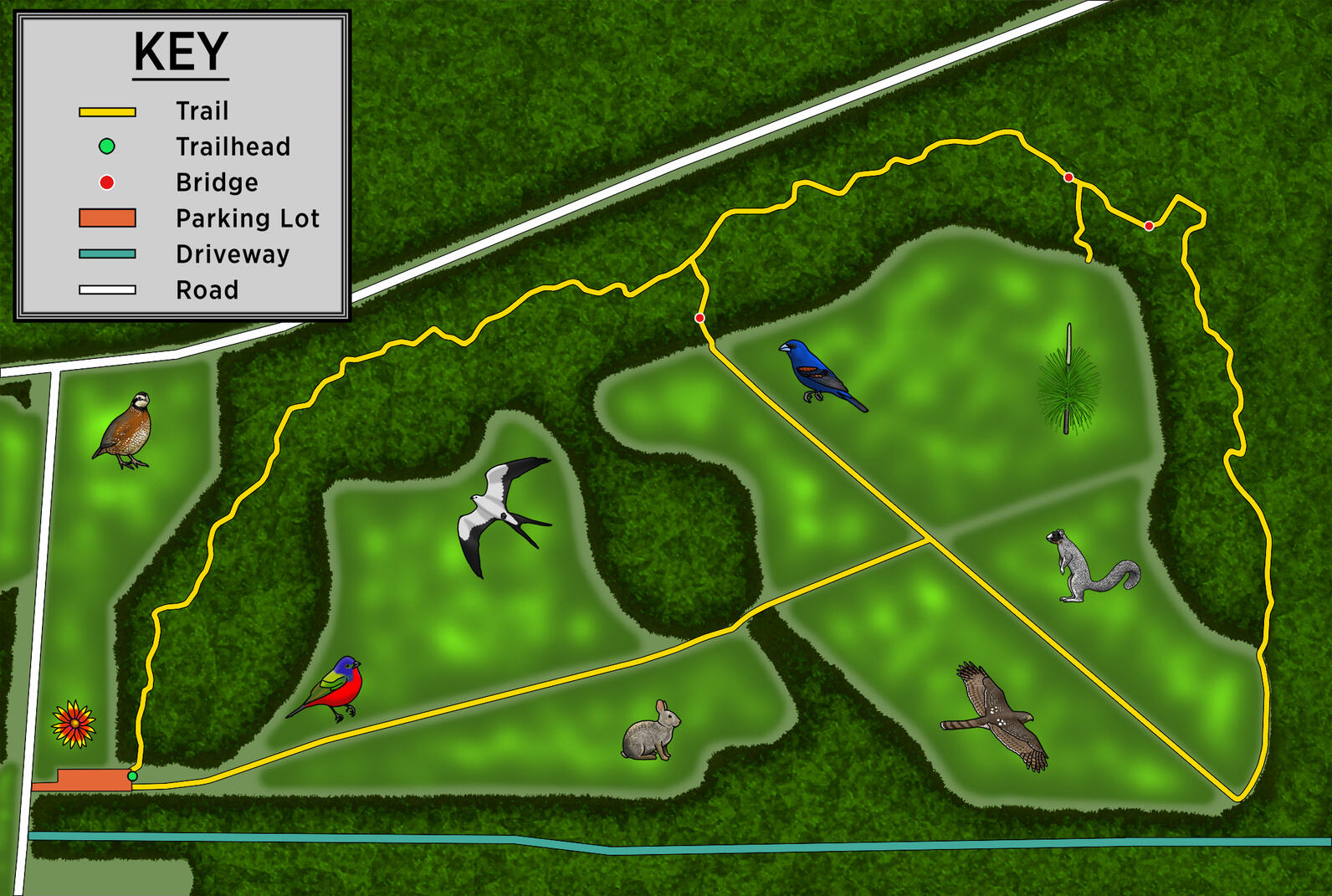
Deaf/low hearing
The boardwalk is a visual splendor of life, with rich greens in the spring, an orange carpet in the fall, and stark whites and black in the winter. It’s very common to see animals like warblers, owls, otters, snakes, and so on, but sometimes you still have to hunt for them as most wild animals survive best by not bringing attention to themselves. Our boardwalk also has a lot of signs detailing the natural and cultural significance of Beidler Forest.
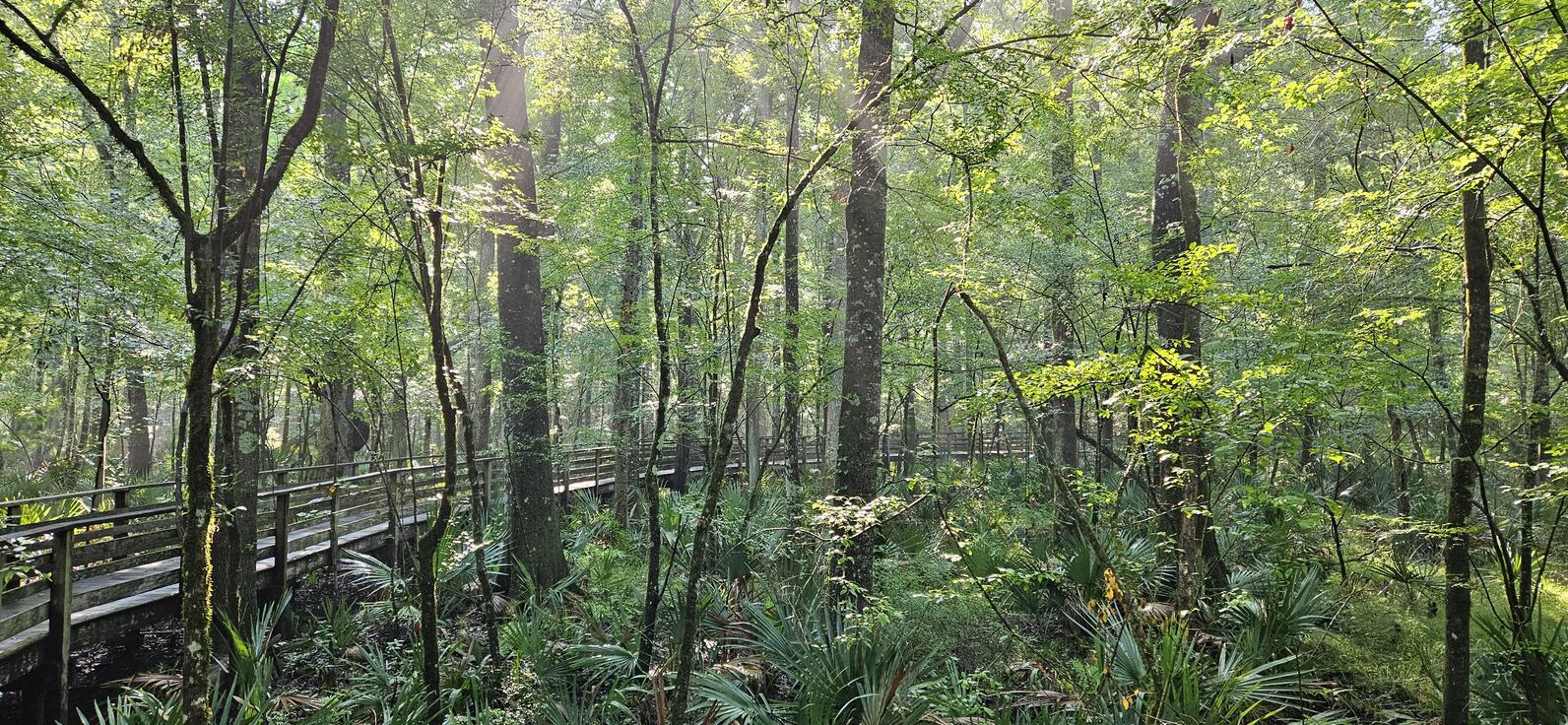
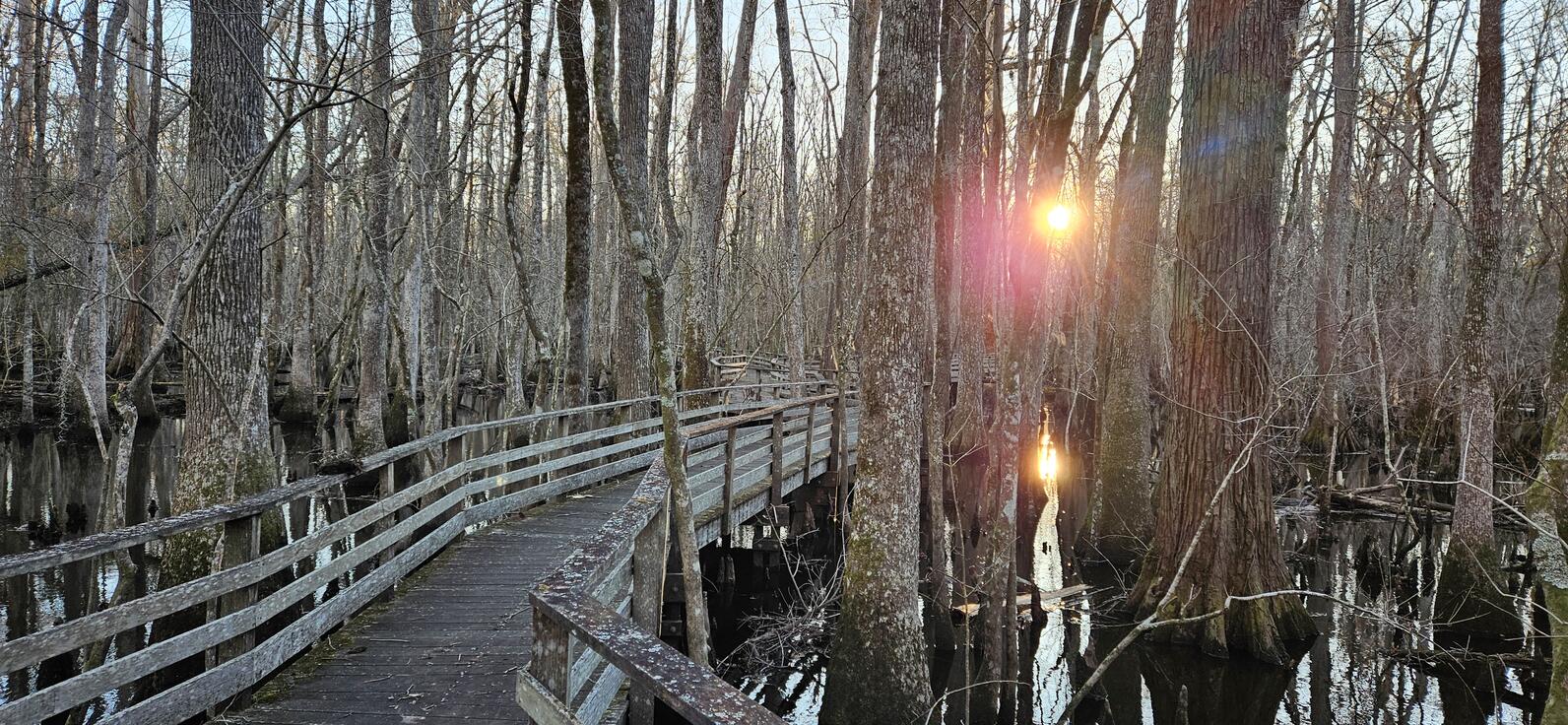
We also recommend the Cornell Lab's Merlin app for detecting birds. Even if you can’t hear them yourself, the app can assist your birding by telling you who’s singing nearby. Then like with any bird search it’s up to you to find them.
Blind/low vision
The boardwalk is rich soundscape whose chorus shifts depending on the season. Even during the day owls can be heard calling to each other, and songbirds like Prothonotary Warblers, Northern Parulas, Carolina Wrens, Yellow-billed Cuckoos, and more compete for attention. In the winter, a silence can settle about the forest, a soft breeze trailing overhead occasionally interrupted by the stark call of a Pileated Woodpecker.
If you have any questions regarding accessibilityaccessibility, please send them to Beidler@audubon.org
Service Animals
We allow service dogs on our boardwalk and other grounds, as classified by the ADA. We do not allow emotional support animals or pets in general, even if they are carried or in a backpack. This is a wildlife sanctuary, so the presence of pets (which are often predators, domesticated or not) are not beneficial in any way to our native wildlife. We love pets, but there are plenty of other places you can go to spend quality time with them outdoors.
How you can help, right now
Boardwalk Tickets
We're open Wednesdays thru Saturdays 9 AM to 6 PM and
Sundays 11 AM to 4 PM.
Beidler Membership
Click here to purchase a membership, which provides free admission for a year and other benefits. We offer both Individual and Family Memberships.
Donate to Beidler Forest
If you wish to support us, please consider donating. 100% of your donation goes back into Beidler Forest.


